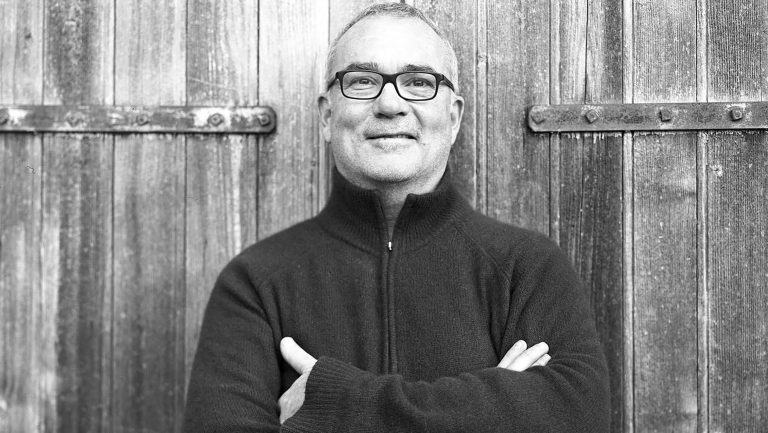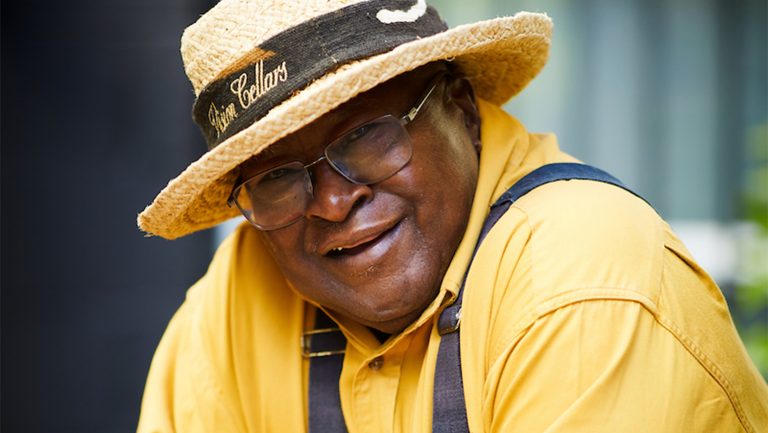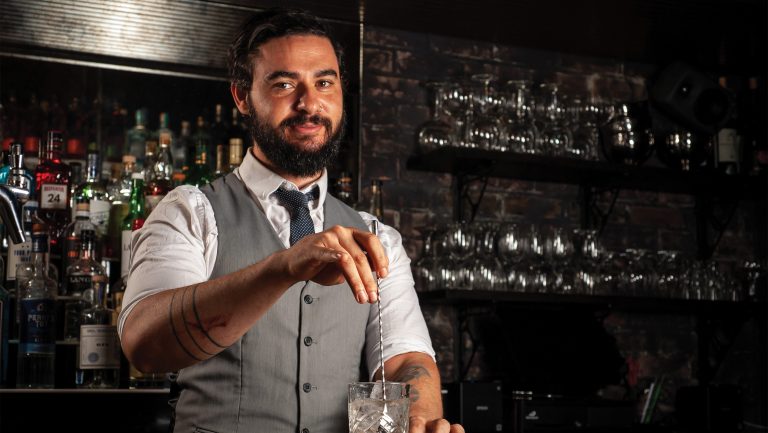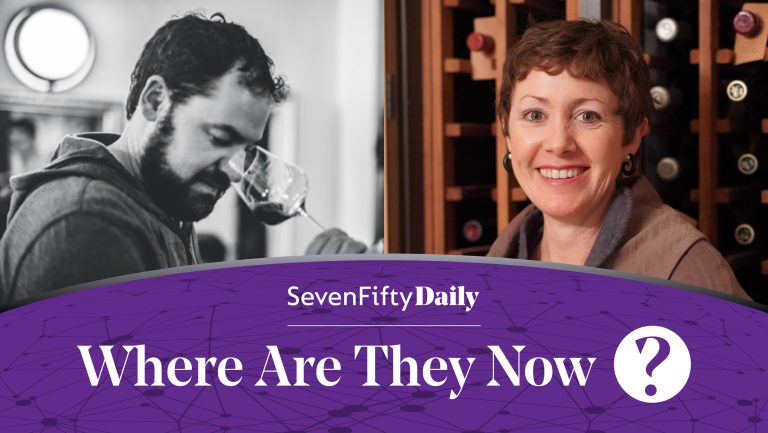To run a successful winery these days, it’s absolutely essential to invest in magazine-quality photography and a slick website that’s fully loaded with e-commerce and automated marketing tools.
Unless, that is, you are Eric Texier, in which case your online presence consists of a single web page bearing only 12 words, an email address, phone number, and a photo of an old green office chair sitting in a woebegone alley.
“It is the best website I have ever had,” asserts the Rhône Valley producer. “I had a real website and it was a pain in the ass. Every single day I had people asking questions about it.” Given that he produces approximately 5,000 to 7,000 cases annually, Texier adds, “I only need 7,000 customers in the world.”

Don’t miss the latest drinks industry news and insights. Sign up for our award-winning newsletters and get insider intel, resources, and trends delivered to your inbox every week.
This irreverent French winemaker has built a totally unorthodox business that ignores DTC and domestic sales and completely circumvents mainstream marketing. In fact, he doesn’t even pour his own wines when he’s building relationships in the trade (more on this later).
Out of Step
Texier has never played by the rules of French winemaking. He did not inherit a vineyard or a large fortune. He was not trained in enology or viticulture—he was a nuclear engineer until the age of 32. His lieux-dits weren’t considered great until he started working with them. He does not own a destemmer. He has never inoculated a tank, unless you count pied de cuve.
When Texier launched his eponymous label, in 1999, his natural winemaking flew in the face of the Parker-influenced techniques that prevailed in the Rhône at the time. French retailers and sommeliers were obsessed with the modern Guigal style, but Texier didn’t use new oak or much else in the cellar. He had learned his craft in Burgundy at Domaine Guffens Heynen and cites Jean-Claude Chanudet of Domaine Joseph Chamonard in Beaujolais as a key mentor. “I was not ashamed,” he recalls, “to pour wines that were under 13.5 percent alcohol.”
Au Revoir, France
Rather than trying to persuade buyers at home to take a chance on him, Texier went for foreign markets right out of the gate, moving approximately 60 percent of his first vintage into the United States. Since then, 90 percent of his sales have been outside France. “You have to kiss a lot of asses to sell wine in France,” he says with a shrug. “That’s not my personality. It was easier for me to export.”
For most small-business owners, the idea that exporting inventory could be “easier” is a head-scratcher. But Texier happened to connect with the New York–based importer Joe Dressner of Louis/Dressner Selections at the very moment when natural wines were coming into vogue in the U.S.
A new guard of young, curious, and knowledgeable enthusiasts were hanging out at wine bars like Terroir Natural Wine Bar & Merchant in San Francisco and shopping at Chambers Street Wines in New York, where discussions centered on minimal intervention and spontaneous fermentations. “Our clients were open to [Texier’s] wines from the beginning,” says retailer David Lillie, a partner at Chambers Street. “I didn’t have to convince anyone. They were very much in the style of the other Louis/Dressner wines.
For these customers, the region and grape variety didn’t matter so much as the producer’s personal philosophy. And scores were beside the point. “I didn’t bother trying to convince the Northern Rhône or Syrah drinkers,” Texier recalls. “Instead, I approached the Cabernet Franc, Trousseau, and Poulsard drinkers. I met a lot of open-minded young kids who were drinking Loire or Beaujolais wines. They were interested to see that someone was making a Syrah that was not in the Australian, 99-point style.”
Connecting over the Competition
An autodidact, Texier had traveled and tasted extensively before trying his own hand at winemaking. Thanks to his keen passion, he could engage enophiles anywhere in the world on the subject of wine—any wine. “When people came to visit,” he says, “they would be shocked. Because I would open maybe one or two of my own wines, and 10 or 20 that weren’t mine—they were from all over the planet.”
Texier loved everything, from Oregon’s “Pinot pioneer” wines of the 1970s to up-and-coming Italian producers like Foradori, Fonterenza, and Montesecondo. “It was very easy for me to connect with sommeliers and distributors,” he recalls, “because we could talk about other wines. We could talk over a bottle of German Riesling. Discussing a bottle of ’68 or ’69 Cornas from Noël Verset is a great way to explain my views on wine, and specifically, Syrah.”
By keeping the conversation focused on other winemakers, Texier says, he has never had to make a sales pitch: “My U.K. importer decided to take my wines because we shared a 1991 bottle of Marius Gentaz Côte-Rôtie and talked for an hour about all the old-school producers.”
The tactic has been so successful that Texier doesn’t see any need to maintain an online presence. Which is fine by him. “A guy asking for a certain wine because he read the tasting notes on my website?” Texier says. “This is not the kind of customer I want. How can you make up your mind about the wine if you don’t drink it? It’s like buying music without listening to it first.”

Dispatch
Sign up for our award-winning newsletter
Don’t miss the latest drinks industry news and insights—delivered to your inbox every week.
Katherine Cole is the author of four books on wine, including Rosé All Day. She is also the executive producer and host of The Four Top, a James Beard Award–winning food-and-beverage podcast on NPR One. She is currently working on a fifth book, Sparkling Wine Anytime (Abrams), to be published in Fall 2020.







